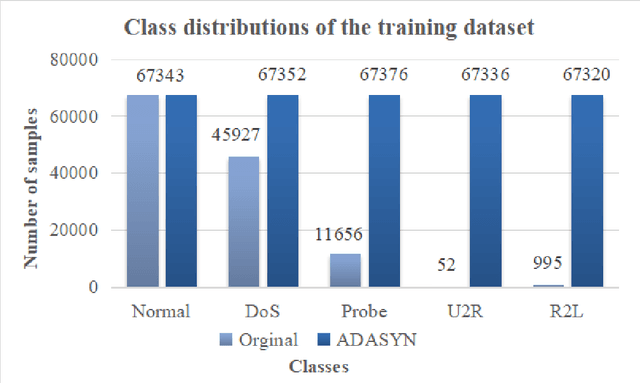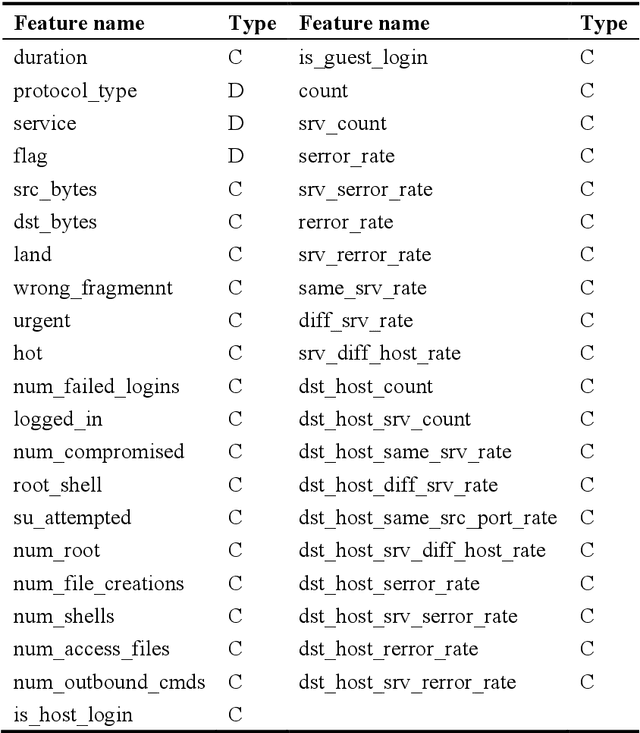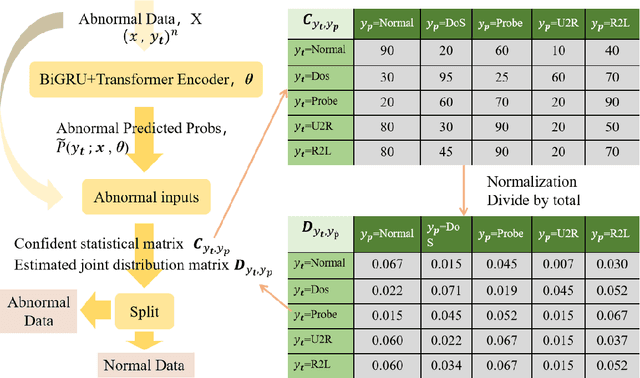Jiale Zhang
Federated Unlearning in the Wild: Rethinking Fairness and Data Discrepancy
Oct 08, 2025Abstract:Machine unlearning is critical for enforcing data deletion rights like the "right to be forgotten." As a decentralized paradigm, Federated Learning (FL) also requires unlearning, but realistic implementations face two major challenges. First, fairness in Federated Unlearning (FU) is often overlooked. Exact unlearning methods typically force all clients into costly retraining, even those uninvolved. Approximate approaches, using gradient ascent or distillation, make coarse interventions that can unfairly degrade performance for clients with only retained data. Second, most FU evaluations rely on synthetic data assumptions (IID/non-IID) that ignore real-world heterogeneity. These unrealistic benchmarks obscure the true impact of unlearning and limit the applicability of current methods. We first conduct a comprehensive benchmark of existing FU methods under realistic data heterogeneity and fairness conditions. We then propose a novel, fairness-aware FU approach, Federated Cross-Client-Constrains Unlearning (FedCCCU), to explicitly address both challenges. FedCCCU offers a practical and scalable solution for real-world FU. Experimental results show that existing methods perform poorly in realistic settings, while our approach consistently outperforms them.
A transformer-BiGRU-based framework with data augmentation and confident learning for network intrusion detection
Sep 05, 2025



Abstract:In today's fast-paced digital communication, the surge in network traffic data and frequency demands robust and precise network intrusion solutions. Conventional machine learning methods struggle to grapple with complex patterns within the vast network intrusion datasets, which suffer from data scarcity and class imbalance. As a result, we have integrated machine learning and deep learning techniques within the network intrusion detection system to bridge this gap. This study has developed TrailGate, a novel framework that combines machine learning and deep learning techniques. By integrating Transformer and Bidirectional Gated Recurrent Unit (BiGRU) architectures with advanced feature selection strategies and supplemented by data augmentation techniques, TrailGate can identifies common attack types and excels at detecting and mitigating emerging threats. This algorithmic fusion excels at detecting common and well-understood attack types and has the unique ability to swiftly identify and neutralize emerging threats that stem from existing paradigms.
IPBA: Imperceptible Perturbation Backdoor Attack in Federated Self-Supervised Learning
Aug 11, 2025Abstract:Federated self-supervised learning (FSSL) combines the advantages of decentralized modeling and unlabeled representation learning, serving as a cutting-edge paradigm with strong potential for scalability and privacy preservation. Although FSSL has garnered increasing attention, research indicates that it remains vulnerable to backdoor attacks. Existing methods generally rely on visually obvious triggers, which makes it difficult to meet the requirements for stealth and practicality in real-world deployment. In this paper, we propose an imperceptible and effective backdoor attack method against FSSL, called IPBA. Our empirical study reveals that existing imperceptible triggers face a series of challenges in FSSL, particularly limited transferability, feature entanglement with augmented samples, and out-of-distribution properties. These issues collectively undermine the effectiveness and stealthiness of traditional backdoor attacks in FSSL. To overcome these challenges, IPBA decouples the feature distributions of backdoor and augmented samples, and introduces Sliced-Wasserstein distance to mitigate the out-of-distribution properties of backdoor samples, thereby optimizing the trigger generation process. Our experimental results on several FSSL scenarios and datasets show that IPBA significantly outperforms existing backdoor attack methods in performance and exhibits strong robustness under various defense mechanisms.
Graph Federated Learning for Personalized Privacy Recommendation
Aug 08, 2025Abstract:Federated recommendation systems (FedRecs) have gained significant attention for providing privacy-preserving recommendation services. However, existing FedRecs assume that all users have the same requirements for privacy protection, i.e., they do not upload any data to the server. The approaches overlook the potential to enhance the recommendation service by utilizing publicly available user data. In real-world applications, users can choose to be private or public. Private users' interaction data is not shared, while public users' interaction data can be shared. Inspired by the issue, this paper proposes a novel Graph Federated Learning for Personalized Privacy Recommendation (GFed-PP) that adapts to different privacy requirements while improving recommendation performance. GFed-PP incorporates the interaction data of public users to build a user-item interaction graph, which is then used to form a user relationship graph. A lightweight graph convolutional network (GCN) is employed to learn each user's user-specific personalized item embedding. To protect user privacy, each client learns the user embedding and the scoring function locally. Additionally, GFed-PP achieves optimization of the federated recommendation framework through the initialization of item embedding on clients and the aggregation of the user relationship graph on the server. Experimental results demonstrate that GFed-PP significantly outperforms existing methods for five datasets, offering superior recommendation accuracy without compromising privacy. This framework provides a practical solution for accommodating varying privacy preferences in federated recommendation systems.
Weather-Magician: Reconstruction and Rendering Framework for 4D Weather Synthesis In Real Time
May 26, 2025Abstract:For tasks such as urban digital twins, VR/AR/game scene design, or creating synthetic films, the traditional industrial approach often involves manually modeling scenes and using various rendering engines to complete the rendering process. This approach typically requires high labor costs and hardware demands, and can result in poor quality when replicating complex real-world scenes. A more efficient approach is to use data from captured real-world scenes, then apply reconstruction and rendering algorithms to quickly recreate the authentic scene. However, current algorithms are unable to effectively reconstruct and render real-world weather effects. To address this, we propose a framework based on gaussian splatting, that can reconstruct real scenes and render them under synthesized 4D weather effects. Our work can simulate various common weather effects by applying Gaussians modeling and rendering techniques. It supports continuous dynamic weather changes and can easily control the details of the effects. Additionally, our work has low hardware requirements and achieves real-time rendering performance. The result demos can be accessed on our project homepage: weathermagician.github.io
Material Identification Via RFID For Smart Shopping
Apr 24, 2025Abstract:Cashierless stores rely on computer vision and RFID tags to associate shoppers with items, but concealed items placed in backpacks, pockets, or bags create challenges for theft prevention. We introduce a system that turns existing RFID tagged items into material sensors by exploiting how different containers attenuate and scatter RF signals. Using RSSI and phase angle, we trained a neural network to classify seven common containers. In a simulated retail environment, the model achieves 89% accuracy with one second samples and 74% accuracy from single reads. Incorporating distance measurements, our system achieves 82% accuracy across 0.3-2m tag to reader separations. When deployed at aisle or doorway choke points, the system can flag suspicious events in real time, prompting camera screening or staff intervention. By combining material identification with computer vision tracking, our system provides proactive loss prevention for cashierless retail while utilizing existing infrastructure.
DeepSelective: Feature Gating and Representation Matching for Interpretable Clinical Prediction
Apr 15, 2025Abstract:The rapid accumulation of Electronic Health Records (EHRs) has transformed healthcare by providing valuable data that enhance clinical predictions and diagnoses. While conventional machine learning models have proven effective, they often lack robust representation learning and depend heavily on expert-crafted features. Although deep learning offers powerful solutions, it is often criticized for its lack of interpretability. To address these challenges, we propose DeepSelective, a novel end to end deep learning framework for predicting patient prognosis using EHR data, with a strong emphasis on enhancing model interpretability. DeepSelective combines data compression techniques with an innovative feature selection approach, integrating custom-designed modules that work together to improve both accuracy and interpretability. Our experiments demonstrate that DeepSelective not only enhances predictive accuracy but also significantly improves interpretability, making it a valuable tool for clinical decision-making. The source code is freely available at http://www.healthinformaticslab.org/supp/resources.php .
AI2Agent: An End-to-End Framework for Deploying AI Projects as Autonomous Agents
Mar 31, 2025



Abstract:As AI technology advances, it is driving innovation across industries, increasing the demand for scalable AI project deployment. However, deployment remains a critical challenge due to complex environment configurations, dependency conflicts, cross-platform adaptation, and debugging difficulties, which hinder automation and adoption. This paper introduces AI2Agent, an end-to-end framework that automates AI project deployment through guideline-driven execution, self-adaptive debugging, and case \& solution accumulation. AI2Agent dynamically analyzes deployment challenges, learns from past cases, and iteratively refines its approach, significantly reducing human intervention. To evaluate its effectiveness, we conducted experiments on 30 AI deployment cases, covering TTS, text-to-image generation, image editing, and other AI applications. Results show that AI2Agent significantly reduces deployment time and improves success rates. The code and demo video are now publicly accessible.
A Survey of Challenges and Sensing Technologies in Autonomous Retail Systems
Mar 11, 2025Abstract:Autonomous stores leverage advanced sensing technologies to enable cashier-less shopping, real-time inventory tracking, and seamless customer interactions. However, these systems face significant challenges, including occlusion in vision-based tracking, scalability of sensor deployment, theft prevention, and real-time data processing. To address these issues, researchers have explored multi-modal sensing approaches, integrating computer vision, RFID, weight sensing, vibration-based detection, and LiDAR to enhance accuracy and efficiency. This survey provides a comprehensive review of sensing technologies used in autonomous retail environments, highlighting their strengths, limitations, and integration strategies. We categorize existing solutions across inventory tracking, environmental monitoring, people-tracking, and theft detection, discussing key challenges and emerging trends. Finally, we outline future directions for scalable, cost-efficient, and privacy-conscious autonomous store systems.
Embodied Escaping: End-to-End Reinforcement Learning for Robot Navigation in Narrow Environment
Mar 05, 2025



Abstract:Autonomous navigation is a fundamental task for robot vacuum cleaners in indoor environments. Since their core function is to clean entire areas, robots inevitably encounter dead zones in cluttered and narrow scenarios. Existing planning methods often fail to escape due to complex environmental constraints, high-dimensional search spaces, and high difficulty maneuvers. To address these challenges, this paper proposes an embodied escaping model that leverages reinforcement learning-based policy with an efficient action mask for dead zone escaping. To alleviate the issue of the sparse reward in training, we introduce a hybrid training policy that improves learning efficiency. In handling redundant and ineffective action options, we design a novel action representation to reshape the discrete action space with a uniform turning radius. Furthermore, we develop an action mask strategy to select valid action quickly, balancing precision and efficiency. In real-world experiments, our robot is equipped with a Lidar, IMU, and two-wheel encoders. Extensive quantitative and qualitative experiments across varying difficulty levels demonstrate that our robot can consistently escape from challenging dead zones. Moreover, our approach significantly outperforms compared path planning and reinforcement learning methods in terms of success rate and collision avoidance.
 Add to Chrome
Add to Chrome Add to Firefox
Add to Firefox Add to Edge
Add to Edge